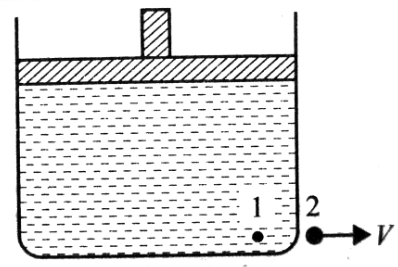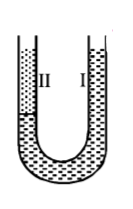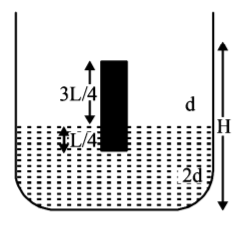Question
A cylinderical vessel contains a liquid of density $$\rho $$ filled upto a height $$h.$$ The upper surface of the liquid is in contact with a piston of mass $$m$$ and area of cross-section $$A.$$ A small hole is drilled at the bottom of the vessel. (Neglect the viscous effects) The speed with which the liquid comes out of the hole is :
A.
$$\sqrt 2 gh$$
B.
$$\sqrt {2g\left( {h + \frac{m}{{\rho A}}} \right)} $$
C.
$$\sqrt {g\left( {h + \frac{m}{{\rho A}}} \right)} $$
D.
$$\sqrt {g\left( {h + \frac{{2m}}{{\rho A}}} \right)} $$
Answer :
$$\sqrt {2g\left( {h + \frac{m}{{\rho A}}} \right)} $$
Solution :
Applying Bernoulli's theorem at point 1 and 2, difference in pressure energy between 1 and 2 = difference in kinetic energy between 1 and 2.
$$\eqalign{ & {\text{Hence,}}\,\,h\rho g + \frac{{mg}}{A} = \frac{1}{2}\rho {v^2} \cr & {\text{or}}\,v = \sqrt {2gh + \frac{{2mg}}{{\rho A}}} = \sqrt {2\left( {gh + \frac{{mg}}{{\rho A}}} \right)} \cr} $$

Applying Bernoulli's theorem at point 1 and 2, difference in pressure energy between 1 and 2 = difference in kinetic energy between 1 and 2.
$$\eqalign{ & {\text{Hence,}}\,\,h\rho g + \frac{{mg}}{A} = \frac{1}{2}\rho {v^2} \cr & {\text{or}}\,v = \sqrt {2gh + \frac{{2mg}}{{\rho A}}} = \sqrt {2\left( {gh + \frac{{mg}}{{\rho A}}} \right)} \cr} $$


